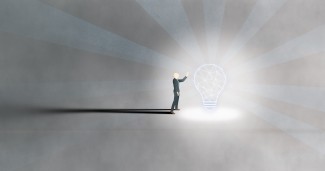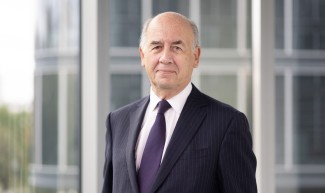The more we like our ideas, the faster we give them shape. But to be creative, you have to have a penchant for ideas that are out of the ordinary… This is what Alizée Lopez-Persem and Emmanuelle Volle, Inserm researchers at Paris Brain Institute, show in a new study published in American Psychologist. Through a behavioural study and a computational model that replicates the various components of the creative process, the researchers describe how individual preferences influence the speed at which new ideas emerge, as well as their degree of creativity. These preferences also determine what ideas we choose to exploit and communicate to others.
What drives us to develop new ideas, rather than familiar methods and processes? What triggers our desire to innovate, at the risk of sacrificing time, energy, and reputation for resounding failure? Creativity is based on complex mechanisms that we are just beginning to understand and in which motivation plays a central role. But the pursuit of a goal is not enough to explain why we favour certain ideas over others, and whether this choice benefits the success of our actions.
“Creativity can be defined as the ability to generate original and relevant ideas in a given context to solve a problem or improve a situation. It’s a key skill for adapting to change, but also for bringing it about, explains cognitive neuroscientist Alizée Lopez-Persem. Our team is interested in the cognitive mechanisms that produce creative ideas, in the hope of learning how to use them wisely.”
Researchers agree that the creative process consists of two successive phases: the generation of new ideas, and the evaluation of their potential. But until now they did not know how this assessment works, and what makes us choose some ideas over others. “We need to put a value on our ideas so that we can select the best ones,” says Alizée Lopez-Persem. However, there is no evidence that this is a rational and objective assessment in which we try to inhibit our cognitive biases in order to make the best possible choice. We therefore wanted to know how this value is assigned, and whether it is dependent on individual characteristics.”
Objective the inner movement of ideas
Modelling the creative process as a sequence of operations that involve distinct brain networks does not really fit into a popular conception of creativity, which is generally seen as an impulse that captures, transports, and overwhelms us. Yet Emmanuelle Volle’s team believes that creativity has three fundamental dimensions that can be modeled using mathematical tools: exploration, which relies on personal knowledge and allows one to imagine possible options; evaluation, which involves gauging the qualities of an idea; and selection, which allows one to choose the idea that will be verbalized.
To understand the interrelationships among these three dimensions, the researchers reproduced them in a computational model – which they then confronted with the actual behaviour of individuals recruited to the study. Through Paris Brain Institute PRISME platform, 71 participants were invited to take free association tests, which consist of matching words in the most daring way possible. They were then asked to rate how much they liked these associations of ideas, and whether they felt they were relevant and original.
Our results indicate that subjective evaluation of ideas plays an important role in creativity. We observed a relationship between the speed at which new ideas were generated and the participants’ level of appreciation of these ideas. In other words, the more we like the idea we are about to formulate, the faster we propose it. Imagine, for example, a cook who is about to make a sauce: the more seduced he is by the flavour match he has in mind, the sooner he will pounce on the ingredients! Our other finding is that this assessment is based on a combination of two subjective criteria: originality and relevance.
What individual preferences promote creativity?
The team shows that the importance given to these two criteria varies among individuals. “Some favour the originality of an idea over its relevance; in others, the reverse is true. It all depends on experience, personality and probably the environment," she adds. But preferring either originality or relevance has a role in creative thinking: we have shown that individuals with an inclination for original ideas offer more inventive concepts.”
Finally, the team’s model predicted the speed and quality of participants’ creative proposals, based on their preferences measured in an independent task. These results highlight the mechanical nature of creative impulse. They also make it possible, in the long run, to precisely describe the mechanisms of creativity at the neurocomputational level, and to correlate them with their neural substrate… challenging the stereotype that creative thinking is a mysterious process over which we have no control.
In the future, we hope to define different profiles of creativity, to be related to people’s field of activity. Do you have different creative preferences if you are an architect, software engineer, illustrator or technician? Which environments promote creativity, and which inhibit it? Finally, could we modify or re-educate our creative profile through cognitive exercises to match personal ambitions or needs? All these questions remain open for the time being, but we fully intend to answer them.
Funding
This study was carried out with funding from the Agence Nationale de la Recherche, the Investissements d’avenir programme, the Becas-Chile post-doctoral fellowship, the Fondation des Treilles, the Ile-de-France region, and the Marie Skłodowska-Curie Horizon 2020 programme.
Sources
Lopez-Persem, A. et al., How subjective idea valuation energizes and guides creative idea generation, American Psychologist, 14 août 2023. https://doi.org/10.1037/amp0001165







